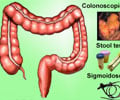
‘Physical activity alone is a crucial factor in reducing the risk of colorectal adenoma.’
Read More..Tweet it Now
"The links between physical activity, adenomas and colorectal cancer are well understood, but this is the first study to demonstrate the cumulative effects of physical activity starting in adolescence on the incidence of colorectal adenoma," said Leandro Rezende, a researcher at FM-USP and one of the authors of the study.Read More..
The authors analyzed the data of 28,250 women included in the Nurses’ Health Study II (NHS II), one of the largest investigations into risk factors for major chronic diseases ever conducted. The sample population included women aged 25-42 years who were employed as nurses and medical residents in the United States. It was one of a series of prospective cohort studies conducted to examine the etiology of chronic diseases and the long-term effects of physical activity, nutrition, hormones, and the environment, among other factors, on health and disease development.
The study analyzed the association between physical activity during adolescence and risk of adenoma later in life and adjusted for such known risk factors as smoking, diet, alcohol intake, and family history of colorectal cancer.
The results of the analysis showed that physical activity in adolescence (12-22) reduced the risk of adenoma by 7% compared with little or no physical activity (less than 60 minutes per day). Physical activity in only adulthood (23-64) reduced the risk by 9%. Physical activity in both adolescence and adulthood reduced the risk by 24%.
According to Rezende, the small difference between the impact of physical activity in adolescence alone and in adulthood alone reflects the different lengths of the two periods. "The reduction is actually similar in each case," he said. "This tendency suggests that there is a cumulative effect of physical activity as life goes on. Whether it’s during adolescence or adulthood, the more physical activity we get, the lower the risk of developing adenoma in adulthood becomes."
Advertisement
According to the researchers, physical activity may reduce the risk of carcinogenesis by decreasing body fat, inflammation, and insulin levels.
Advertisement
For José Eluf Neto, Full Professor at FM-USP and Rezende’s Ph.D. thesis adviser, the results of the study confirm the importance of policies to encourage physical activity as a public health priority.
"Colorectal cancer is one of the most common types of cancer, and science shows that physical activity alone is a key factor in reducing the risk of adenoma. However, it should be kept in mind that an adenoma is not cancer. In other words, we’ve shown that physical activity helps prevent the disease from even occurring because it reduces the risk of developing a precursor," Eluf Neto told.
Sedentary behavior in adolescence has been a major concern, especially in connection with colorectal cancer, he added. "Although in most cases the disease appears after the age of 60, the number of patients under 50 is rising. We don’t know if this is because more people are being diagnosed or undergoing colonoscopies, or whether early exposure to risk factors such as a sedentary lifestyle may be driving the earlier incidence of colorectal adenoma or cancer," he said.
The Nurses’ Health Study II began in the late 1980s, with a target population of nurses between 25 and 42 years of age. Each set of two-year cohort members received a follow-up questionnaire with questions about diseases and health-related topics, including smoking, hormone use, pregnancy history, and menopausal status. The 1997 questionnaire was the first to include items relating to physical activity, diet, and obesity during adolescence (when they were between 12 and 22 years of age).
"They answered questions on home-school commute times and methods, and on moderate physical activity such as walking as well as more intense exercise such as gym classes, swimming, and other sports. This enabled us to estimate the level of physical activity during their adolescence," Rezende said.
Follow-up continued until 2011 when the questionnaire included further items on lifestyle habits between the ages of 23 and 64 - a period in which the nurses responded to the questionnaire every two years. To participate in the study, the nurses had to have undergone at least one sigmoidoscopy or colonoscopy, since polyps and adenomas are asymptomatic.
Source-Eurekalert














